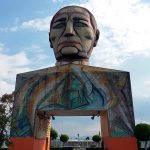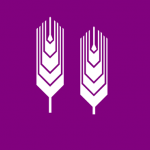Metro Tepalcates es una estación a nivel de superficie de la Línea A, en el oriente de la Ciudad de México. Como la mayor parte de la línea, se asienta sobre la parte central, entre los carriles de la Calzada Ignacio Zaragoza. Lleva el nombre de la enorme colonia Tepalcates, al sur y oeste de la estación. Al norte y oriente, la colonia Juan Escutia conforma el límite con el municipio de Nezahualcóyotl en el Estado de México.
asienta sobre la parte central, entre los carriles de la Calzada Ignacio Zaragoza. Lleva el nombre de la enorme colonia Tepalcates, al sur y oeste de la estación. Al norte y oriente, la colonia Juan Escutia conforma el límite con el municipio de Nezahualcóyotl en el Estado de México.
Tepalcates toma su nombre de la palabra náhuatl tepalcatl, que significa “loza”. El nombre se refiere a la cerámica fabricada durante mucho tiempo en Tlaxcala y, quizás de manera más famosa, en la planta de Talavera en Puebla. Ambos estados, y en menor grado el oriente de la Ciudad de México, eran conocidos por la producción de vasijas, utensilios y esculturas incluso desde la antigüedad. La ceniza volcánica dispersa sobre gran parte de la región mejoró en gran medida su idoneidad para la producción de cerámica y alfarería.
El logo de la estación representa una antigua vasija de barro producida en la frontera entre las actuales Tlaxcala y Puebla. Metro Tepalcates es una estación moderadamente ocupada en una parte densamente poblada de la ciudad.

Cercano a 1.15 kms.

Cercano a 1.17 kms.

Cercano a 1.26 kms.

No visitar la estación más grande y concurrida del sistema de metro es perderse un centro de tránsito muy concurrido.

La antigua tierra de cultivo del oriente de la Ciudad de México...

La entrada a Iztacalco e Iztapalapa.

Una estación que toma prestado el símbolo de toda la zona este de la ciudad...

Una estación cerca de una famosa cima en Iztapalapa...